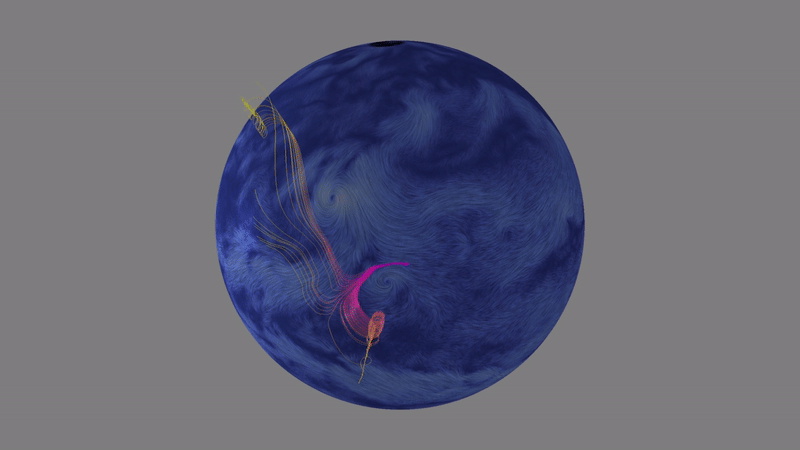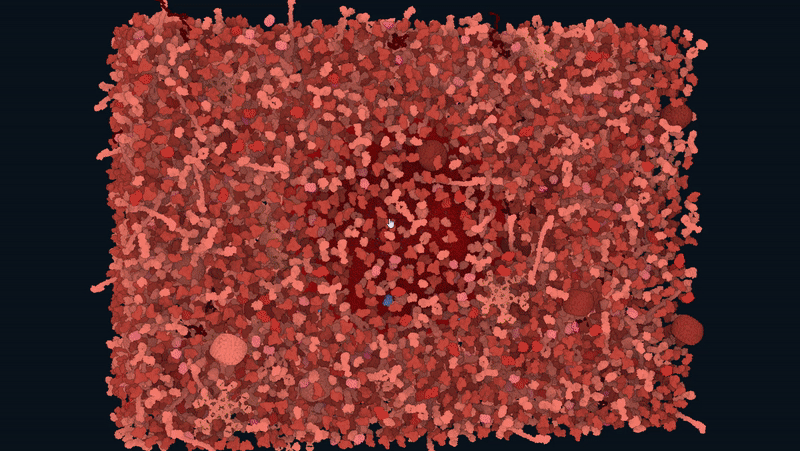Theme Description
This research theme aims to bridge the huge differences in scale of state-of-the-art and future large-scale scientific data, for effective interactive visualization and visual analysis. Nowadays, often only a single scale of data is visualized in many important areas ranging from medicine to industry. To better understand complex phenomena, however, it is necessary to study both the intricate details as well as the big picture. This naturally leads to an extreme range of scales that need to be simultaneously and interactively accessible to users. For instance, bridging cell biology and molecular biology with integrative visualization involves a range of fourteen orders of magnitude, from atoms to whole cell models. Other important examples are simulations and measurements in meteorology and climate science, where one needs to understand local phenomena in the context of the planet-wide climate, spanning a huge range of Spatio-temporal scales.
The Extreme Multi-Scale Visualization theme addresses the following scientific topics and challenges:
-
Visualization of scientific data of extremely wide range in space, time, and dynamic range, addressing the technical challenges while enabling users to focus on the relevant information.
-
Novel multi-resolution and multi-scale methods, combining different scales and resolution levels while providing context and effective interaction for users.
-
Visualization and processing of extreme data sizes, accommodating data from state-of-the-art as well as future extreme-scale simulations and high-resolution measurements that are tera- to petabytes in size.
-
Real-time performance, creating novel techniques that enable users to work interactively and effectively with extreme-scale data.
-
Multi-user scalability, allowing multiple users to interact with and visualize data collaboratively at the same time.
A broad range of application sectors needs visualization to be able to quickly dive into details of interest while having the big picture at hand. For example, the first technological outcomes of scalable visualization technology that we are developing are commercialized in the context of science dissemination, where audiences in science centers will be able to interactively navigate throughout cellular structures at dynamically generated levels of detail with up-to-date scientific accuracy.
Our multiscale visualization technology also finds applications for local industrial partners, for example, trillion-cell reservoir and basin simulations performed by Saudi Aramco, whose effective and accurate analysis requires novel scalable visualization solutions.
Example Projects
Large-Scale Visualization for Neuroscience
In a collaboration between Prof. Pierre Magistretti’s group at KAUST, Harvard University, and EPFL, we are developing multi-scale visualization technology to gain an improved understanding of how the brain works and develops. Acquired electron microscopy data of extremely high resolution contain crucial details on individual synapses, embedded in the context of macroscale spatial samples.

Visual Analysis of Geophysical Flows
Together with Earth and climate scientists at KAUST, including Prof. Ibrahim Hoteit’s Red Sea Modeling and prediction group, as well as the German Climate Computing Center DKRZ, we are working on novel visualization technologies for large-scale geophysical fluid flows in the Earth’s atmosphere as well as the oceans, including the Red Sea. The understanding of climate development and individual weather phenomena is of extreme importance worldwide, where local and global scales must be combined effectively.

Whole-Cell Visualization
In collaboration with Scripps Research and the Allen Institute of Cell Science, we have the ambition to develop technology that can represent complete models of dynamic cells on the atomic level. Using this technology, various interactions of molecules can then be studied in the context of the entire organism. A subpart of this project is to develop algorithms for modeling such cells based on user-driven machine learning.

In-Silico Design for DNA Nanotechnology
We are developing scalable visualization technologies for creating nanotechnology. With the concept of self-assembled DNA nanotechnology, designing a smart machine on several scales simultaneously is a key requirement. With our partner, we have just developed the first multiscale computer-aided design system, and we are in discussions with industry partners about possible technological exploitation.
